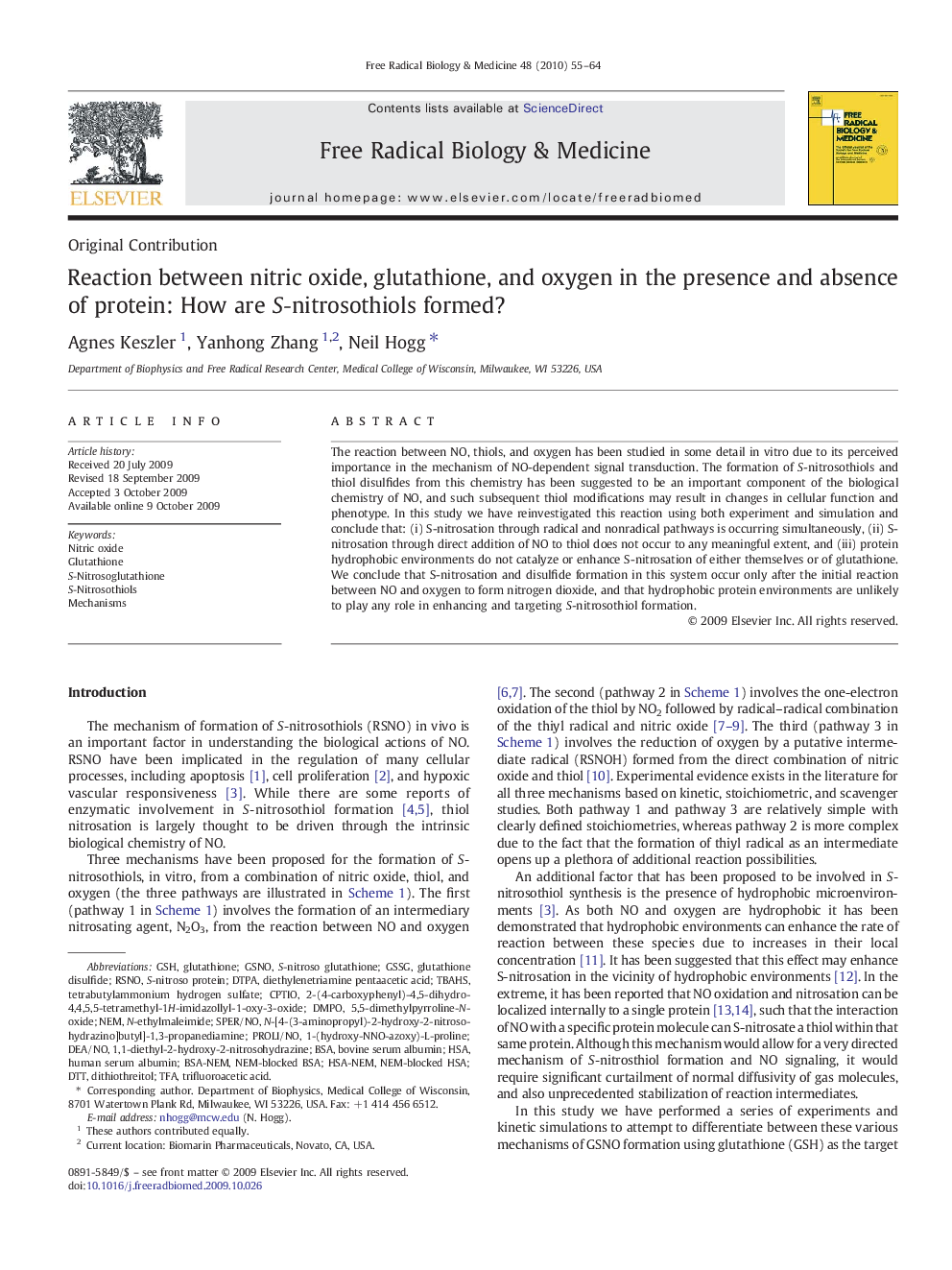| Article ID | Journal | Published Year | Pages | File Type |
|---|---|---|---|---|
| 1909681 | Free Radical Biology and Medicine | 2010 | 10 Pages |
The reaction between NO, thiols, and oxygen has been studied in some detail in vitro due to its perceived importance in the mechanism of NO-dependent signal transduction. The formation of S-nitrosothiols and thiol disulfides from this chemistry has been suggested to be an important component of the biological chemistry of NO, and such subsequent thiol modifications may result in changes in cellular function and phenotype. In this study we have reinvestigated this reaction using both experiment and simulation and conclude that: (i) S-nitrosation through radical and nonradical pathways is occurring simultaneously, (ii) S-nitrosation through direct addition of NO to thiol does not occur to any meaningful extent, and (iii) protein hydrophobic environments do not catalyze or enhance S-nitrosation of either themselves or of glutathione. We conclude that S-nitrosation and disulfide formation in this system occur only after the initial reaction between NO and oxygen to form nitrogen dioxide, and that hydrophobic protein environments are unlikely to play any role in enhancing and targeting S-nitrosothiol formation.
